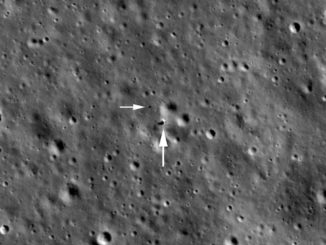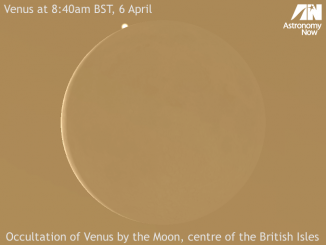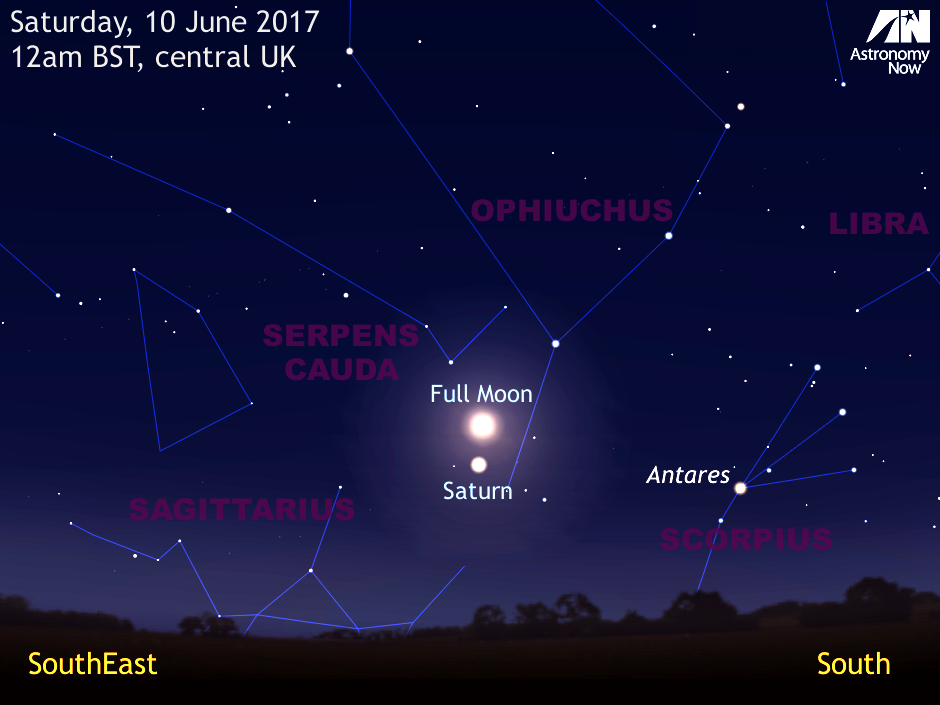
Now that largest planet Jupiter has entered the finale of its 2017 apparition, another gas giant enters stage left for its turn in the spotlight. Saturn is the magnitude zero ‘star’ in the constellation of Ophiuchus hugging the south-southeast horizon at local midnight for observers in Western Europe.
Don’t confuse Saturn with first-magnitude star Antares in Scorpius, some three-quarters of the span of an outstretched hand at arm’s length to the right of the ringed planet. To remove any doubt, the full Moon passes 2½ degrees above Saturn on the UK night of 9—10 June.
Viewing prospects for the ringed planet
Saturn reaches opposition on 15 June at 10h UT and is closest to the Earth some four hours later at a distance of 9.043 astronomical units, or 841 million miles (1,353 million kilometres). However, as seen from temperate latitudes, the jewel of the Solar System struggles to sparkle owing to its southerly declination of -22 degrees.
For an observer in the heart of the British Isles, Saturn attains a peak altitude of just 14 degrees above the southern horizon at 1am BST mid-month, or at midnight by the end of June. Skywatchers in the southern United States are more favourably placed to see Saturn almost 45 degrees high in the southern sky at its best, while Australian observers can rejoice at views of it almost overhead in the north at local midnight.
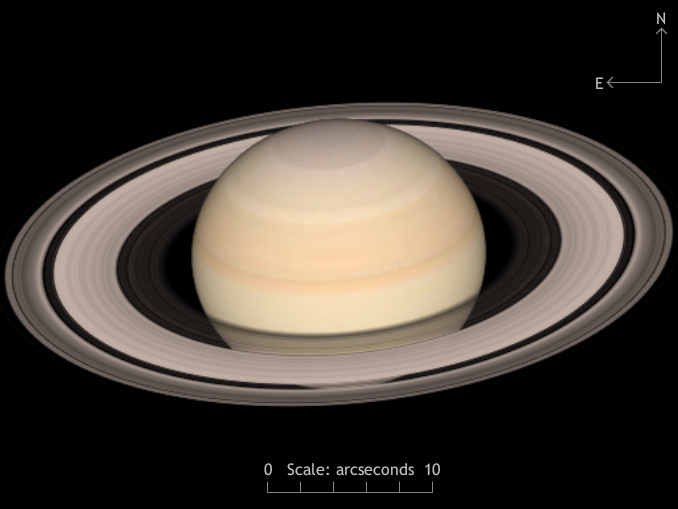
There’s no denying that your first clear view of Saturn and its perfectly symmetrical rings through a telescope of good optical quality will remain indelibly etched in the memory. The planet is a gas giant that spins once on its axis in approximately 10¼ hours at the equator, but its thick gaseous atmosphere is somewhat bland compared to its larger sibling, Jupiter. Expect to see a subtle banded appearance in six-inch (15-cm) aperture telescopes and larger (a light green filter may help differentiate its belts and zones), but you never know when a short-lived feature like the Great White Spot seen in 1990, or the storm of September 1994, may reoccur.
Given that the ringed planet will be very low in the sky of the British Isles, observers should ensure that telescopes have plenty of time to acclimate to nighttime temperatures and try to avoid sight lines that pass over warm rooftops to avoid distruptive air currents that will ruin fine definition. A high pressure system can bring good seeing conditions, particularly on calm nights when a slight mist prevails. A yellow filter can often sharpen the view too, helping to alleviate the blurring, prismatic effects of atmospheric dispersion.
Saturn’s equator has an angular size of 18.4 arcseconds in mid-June, meaning that a magnification of just 100× is sufficient to enlarge its globe to the same size as the Moon appears to the unaided eye. The planet’s glorious rings have a greatest extent of 41½ arcseconds, their northern face tilted prominently by 26½ degrees to our line of sight such that they extend beyond the north and south poles of the planet. The 3,000-mile-wide Cassini Division between the main A and B rings will be clearly seen in good 3-inch (7.6-cm) aperture telescopes and larger in steady air.
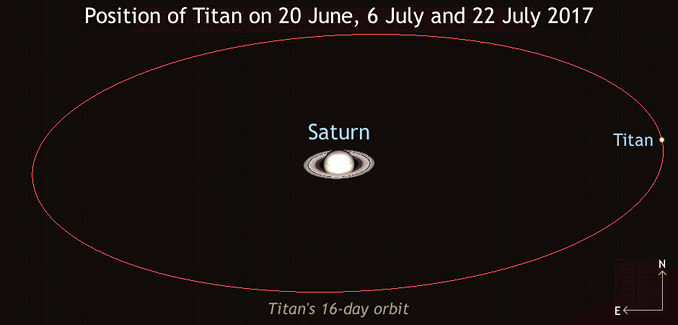
In common with Jupiter, Saturn has an impressive retinue of moons. The largest, 3,200-wile-wide Titan, orbits its parent planet every 16 days and is easy to spot in telescopes of 2-inch (5-cm) aperture or more as it shines at magnitude +8.7. Titan is at elongation, 4½ ring diameters east of Saturn, on 12 June, 28 June, 14 July and 30 July. Titan may be found the same distance west of the planet on 4 June, 20 June, 6 July and 22 July. Second-largest Saturnian moon Rhea is also bright at magnitude +10 with a 4½-day orbit. Favourable elongations two ring diameters east of Saturn occur on 7, 16 and 25 June.

